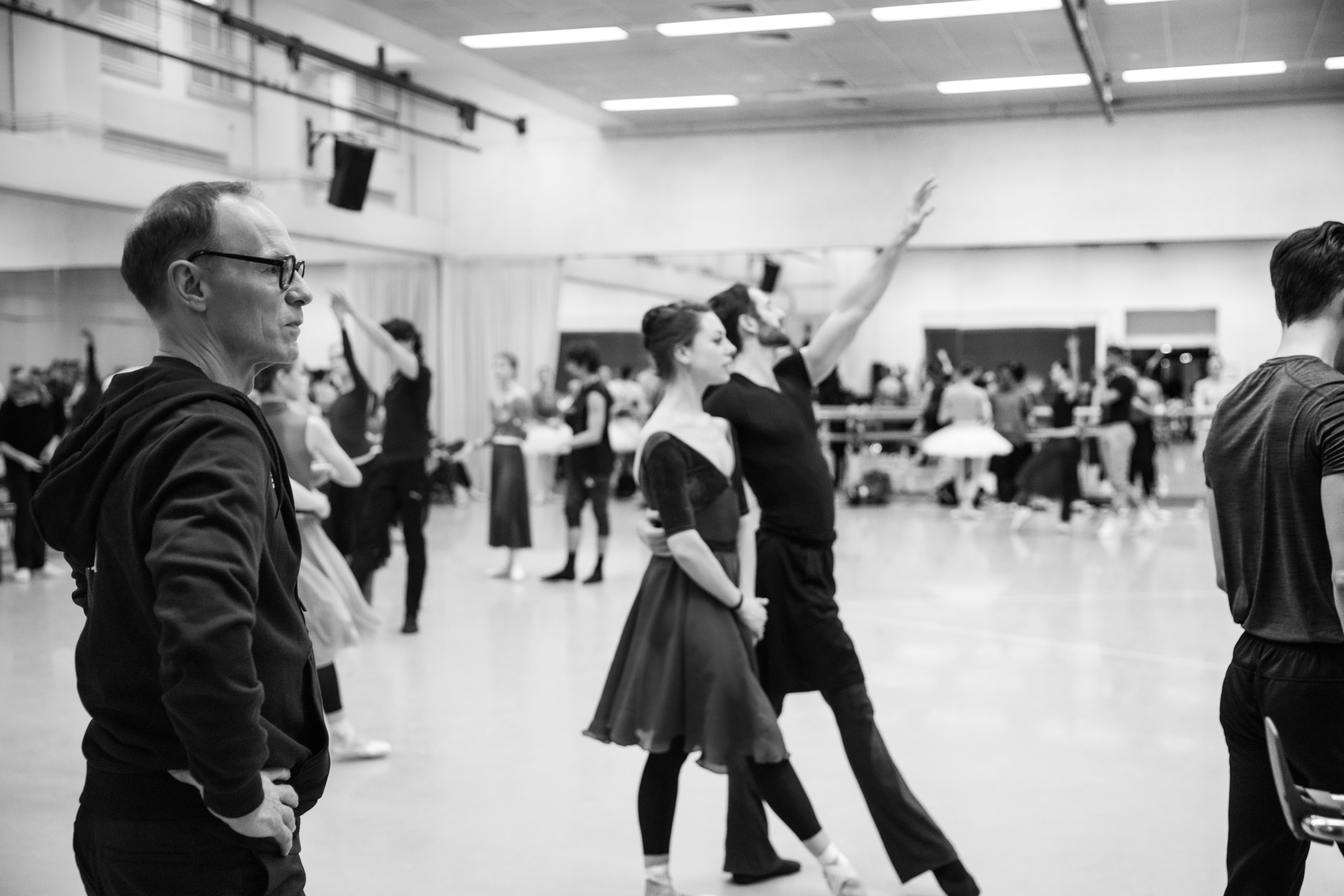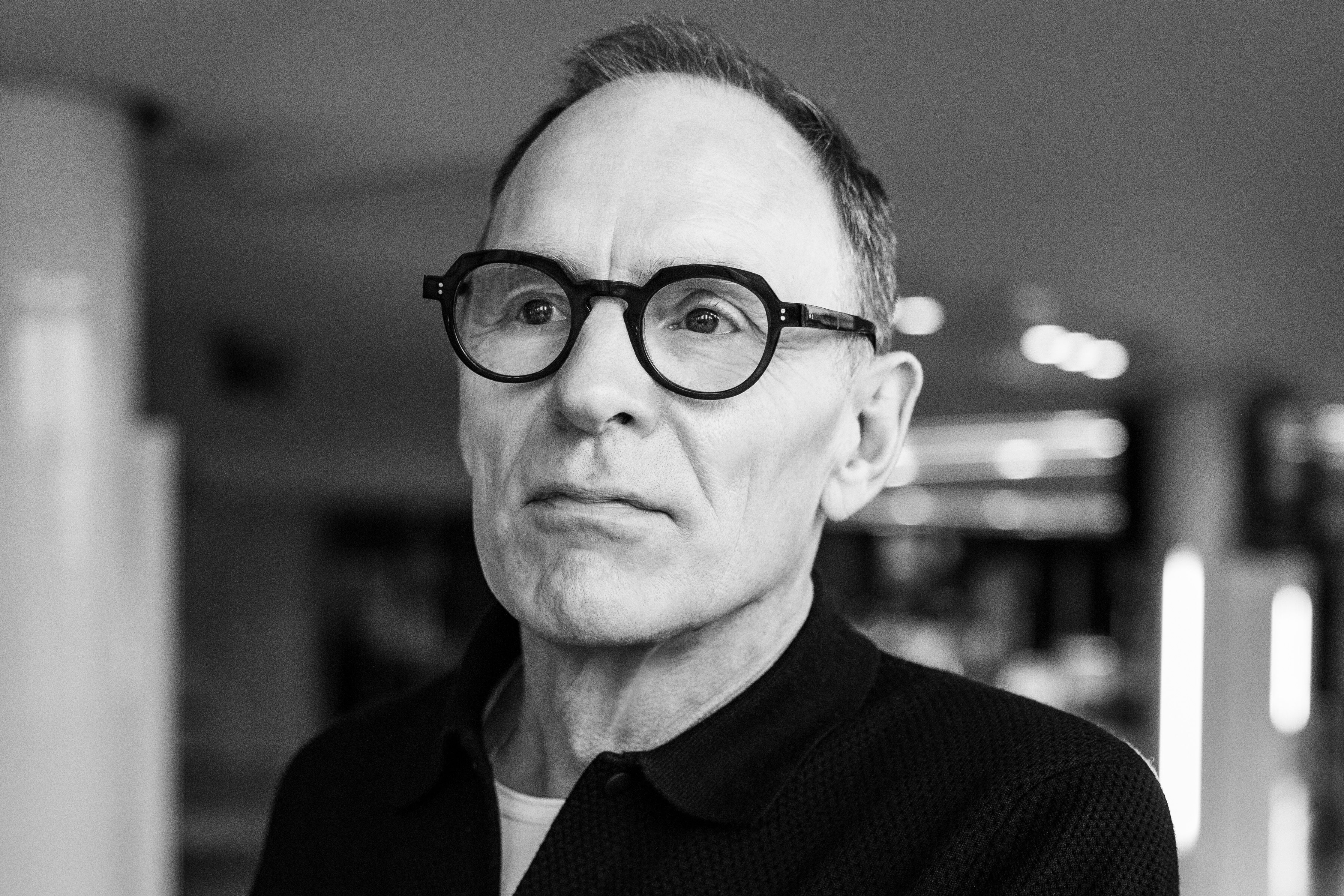
‘A modern, dynamic art form requires new inspiration and impulses’
Interview with artistic director Ted Brandsen.
After spending two years with his company going “up and down, and round and round” because of the corona pandemic, artistic director Ted Brandsen can’t wait to be able to present another complete, uninterrupted season. “I’m really looking forward to getting back to rolling my sleeves up again in the studio (Brandsen is creating a new large-scale work – ed.), but most of all I’m looking forward to seeing our dancers shine on stage again every day. To be at the top of your game, you need to be continually challenging yourself, but that flow has been interrupted time and again over the past couple of years. So our dancers are raring to go now, to pull out all the stops and show why Dutch National Ballet exists.”
Following a period in which Dutch National Ballet focused mainly on the Dutch repertoire – partly due to all the corona restrictions – Brandsen wants to restore the international face of the company to its full glory in the new season. “Dutch National Ballet doesn’t just stand for the best of what Dutch dance has to offer, it also owes its fame to collaborating with the greatest international choreographers of today. And that’s something dancers need: the exchange and confrontation with other makers and other teachers, who often demand totally different things from them than what they’re accustomed to. It creates a sense of excitement and adventure, which is essential not only for them, but also for the audiences. Keeping the art of dance modern and dynamic requires new inspiration and impulses.”
So the repertoire for the 2022/2023 season is characterised by its diversity. “The choreographic palette ranges from young makers like Milena Sidorova and Joshua Junker to the grand masters of dance of the 20th and 21st century. Not to mention the famous full-length classics. Altogether, that’s a plethora of possibilities for the dancers and for our audiences.”
‘Our dancers are raring to go again’
Today’s most sought-after choreographers
Alongside existing works by master choreographers Hans van Manen and George Balanchine, the programme for the new season includes new works and recent creations by artists such as David Dawson, William Forsythe, Wayne McGregor, Christian Spuck and Christopher Wheeldon. “They’re some of today’s most sought-after choreographers on the international scene. We’re joining Dutch National Opera in presenting Christian Spuck’s large-scale Messa da Requiem, an impressive, very human interpretation in song and dance of Verdi’s famous requiem. And we’re devoting a whole programme at the 2023 Holland Festival to William Forsythe – the greatest innovator of contemporary ballet. This includes the Dutch premiere of his wonderful Blake Works 1, created for the Paris Opera Ballet.”

Big and magnificent
With regard to the full-length classics for the new season, Brandsen wants to “pull out all the stops”. “After a period of seemingly endless restrictions, this season we’re deliberately presenting our two biggest full-length productions: The Sleeping Beauty and Swan Lake, both of which are seen as important milestones in Dutch theatre history. I have particularly special personal memories of Peter Wright’s Sleeping Beauty. I’d just joined the company as a dancer, and Dutch National Ballet had never staged such a big and magnificent production before. Based on Marius Petipa’s original choreography, the pure technique it demands means it’s still the ultimate challenge for ballet dancers all over the world. And it’s not without reason that Swan Lake is known as the ‘ballet of ballets’, as it’s the most popular work on our repertoire. Moreover, I think that Rudi van Dantzig’s version is still the most beautiful that exists today. In the new season, we’ll be giving no fewer than seventeen performances of Swan Lake, so that everyone who’s missed the big ballet productions can still indulge. But also the people who don’t know us yet – or only know us on screen – can have the opportunity to see a live performance of this famous ballet classic.”
New audiences and new insights
Brandsen stresses that the corona virus has brought more than just misery to Dutch National Ballet. “By developing many new and different initiatives, we’ve discovered a lot and acquired a large new audience who’ve been following us online. Our streams, online ballet classes and the many videos we’ve shared through our website and social media have been viewed by hundreds of thousands of people across the world – and in the case of the classes, even millions. In addition, the time and space inevitably created by Covid-19 have given us new insights. The world is changing – and has changed. So, because of the pandemic, and also certainly because of environmental concerns, we’ll probably be travelling less in the coming years and focusing more on our online international presence.”
Nevertheless, this doesn’t detract from the company’s need and desire to give live performances again. “Welcoming our audiences regularly to our own theatre is something we’ve missed enormously.”
‘Nobody makes theatre on their own in the woods. You don’t dance for yourself; you dance for others’

Exchange of energy and emotion
It already starts with the young audiences, says Brandsen. “Our school performances, the many education activities, the hundreds of children who are mesmerised by Sleeping Beauty or Swan Lake, and all those young people we reach with our new works related to current events, such as our production for the new season, Dorian, which is a dazzling mix of hip hop and ballet… It’s so important to the future of dance that we attract and retain a new, young audience.”
And for the dancers it’s also crucial that performing for a live audience soon becomes the norm again, says Brandsen. “Dancing in front of cameras is really different from performing for a packed auditorium. Even performing for 400 people, as we’ve had to do several times recently due to the corona measures, is so much nicer than dancing to an empty hall. Not just because of the applause, but because of the exchange with the audience. Nobody makes theatre on their own in the woods. You don’t dance for yourself; you dance for others, and for the energy and emotions that are released on both sides.”